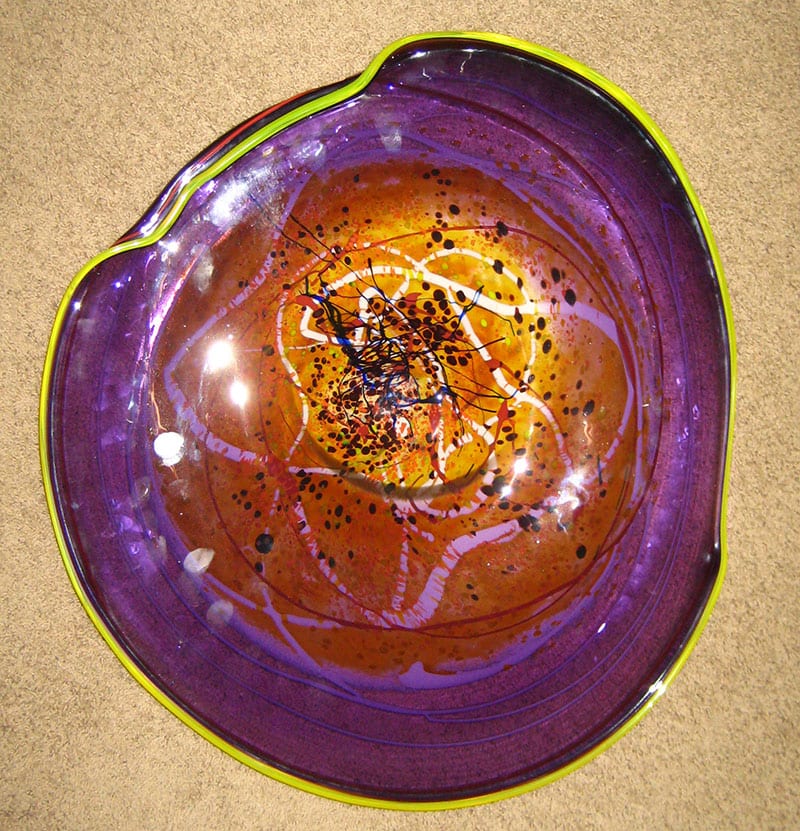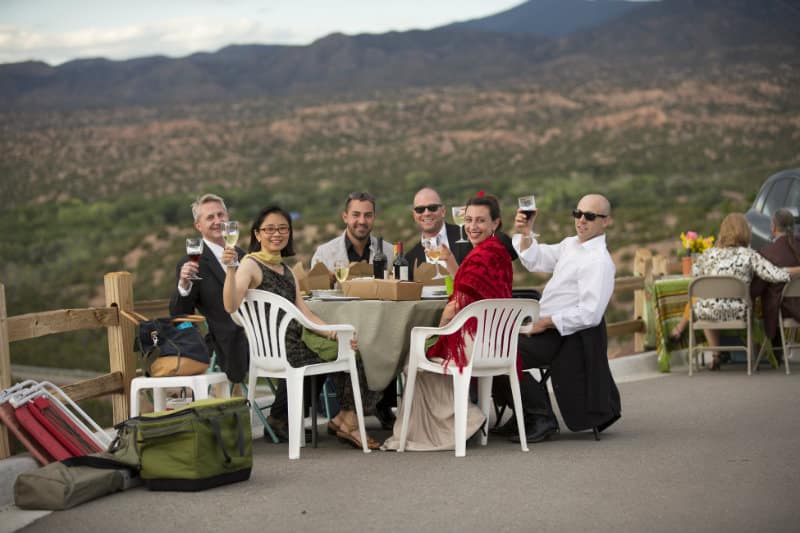THE Magazine asked a clinical psychologist and two people who love art for their take on a painting by Michael Scott entitle Chimayo Chicken in the Kitchen, from the Farny Fables exhibition. They were shown only the image and were given no other information.
This piece symbolizes the commercialism and exploitation of Native American people. We see a Plains Indian in full regalia. He stands proud but looks sad while holding a rifle: The weapon, introduced by whites, would permanently change how he hunted for food. It would also come to brutalize his race. On a fake cigar box, we see a commercialized image of an Indian in a western landscape. In front of it appears a painting of two Native Americans on horseback. They are holding rifles but still enjoying their traditional life. This scene is positioned before the cigar box. Its location symbolizes that it took place prior to white profiteering. Psychologically, eggs have long represented fertility, birth, life, and resurrection (e.g. Easter). Yet, the green eggs here do not represent those things. Instead, they symbolize money. Embedded in the blanket are images of human faces and silhouettes. They appear like apparitions of Indians long gone. Lastly, the bird’s shadow is enormous. It signifies oppression against Native Americans. Indeed, there is much darkness in this work.
—Davis K. Brimberg, Ph.D., Clinical Psychologist
This painting reminds me of my childhood. I grew up playing Cowboys & Indians with my older brother and the neighbor kids in southeastern New Mexico. Something about the colors, the bubble gum, the outdoors, the Indian imagery, the rooster, and the horse all bring back very special memories. It seems to be sort of a play on time as well. The art-historical Henry Farny postcard in the bottom right of this image looks like the 1800s. The Indian standing by his horse in the background of this collection of items almost looks like present-day with a nod to the old days. Native American scholars would enjoy this scene because of the symbols on the Indian’s blanket, his horse, the saddle, the braided mane on the horse—all hint at the tribe to which he belongs. The still-life quality of this piece, the lime, and the colorful blanket in front of a painting all point to domestic interests. All that said, maybe this is just a painting of a painting of a rooster in front of a painting of an early American scene.
—Jeff Tabor, Art Exchange Gallery, Santa Fe
I would title this piece La Gallina in Still Life at a Border Town Trading Post. What I see here are layers of reality, in two sets of objects. There’s the background painting, the “cigar box”, and the photograph. Then there’s the weaving, the limes, and the chicken. For me, the second three represent feminine principles. Spinning and weaving fibers into cloth are historically feminine endeavors—and the cloth is pink. The limes are offspring of a larger natural system—a tree. They are green, a color associated with abundance or fruitfulness. And they are a juicy, tart fruit. The chicken has no cocks comb, or wattle, so she’s a hen. Then there is the mother hen watching over the other symbols. These are in the foreground, and only once removed from reality. The meanings of the other three—painting, box, and picture—are further removed from current reality; pictures of “stories” in pictures. These represent masculine principles. These represent masculine principles. They all have male indigenous people in them (do I need to mention guns and cigars as a stand-in for the phallus?). The people are all shown in front of landscapes of different seasons. The box EL BUBBLE is also a mixing of cultures, and the cigar store Indian is alluded to. Cigar smoking is historically a male endeavor. Bubble gum is a frivolous distraction, or replacement, from connecting with the original herb, tobacco and its sacred rituals. The connection of man to the natural world occurs to me. The mother hen or Gaea, Mother Earth, is watching over all these symbols. Her “shadow” could be hiding the clue to the true meaning of the piece.
—Phebe Brecher, Co-owner Boxes, Bubbles, & Beans














